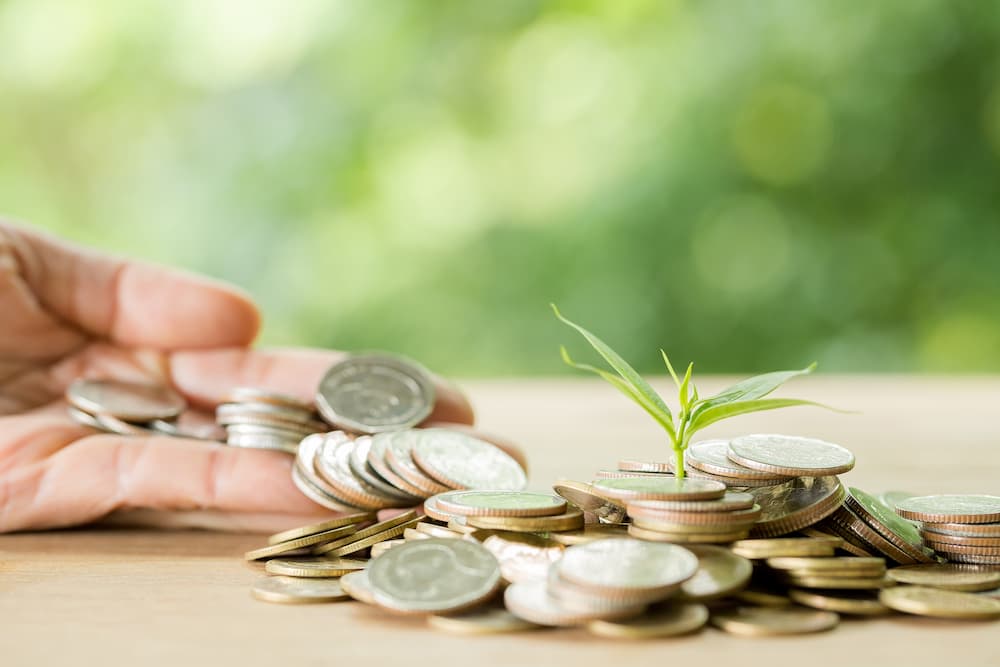7 UK dividend stocks delivering 8%
Published: June 26, 2025 / Market Insights

While the Bank of England's base rate sits at 4.25%, HSBC, Legal & General, and M&G are delivering eye-popping yields over 9%, creating a compelling opportunity for income-focused investors. In a landscape where traditional savings accounts struggle to keep pace with inflation, dividend-paying UK stocks are emerging as the smart money's secret weapon for building sustainable wealth.
The current market environment presents a unique window of opportunity. Economic uncertainty has pushed down share prices of fundamentally strong companies, inflating their dividend yields to levels we haven't seen in years. For DIY investors willing to do their homework, this creates a rare chance to lock in high-income streams from established British businesses.
But here's the catch: not all high-yield dividend stocks are created equal. Some are value traps, while others represent genuine opportunities to build long-term wealth. The difference between success and disappointment often comes down to understanding which companies can sustain their generous payouts and which are simply burning through cash to maintain appearances.
Why UK Dividend Stocks Deserve Your Attention Right Now
The UK market offers something unique in today's global investment landscape: mature, cash-generating businesses trading at reasonable valuations with dividend yields that would make bond investors weep with envy. Unlike growth stocks that promise future riches, dividend stocks put money in your pocket today while you wait for capital appreciation.
British companies have a long tradition of rewarding shareholders through thick and thin. Even during the challenging periods of recent years, many FTSE companies maintained or even increased their dividend payments, demonstrating the resilience of their business models.
The 7 UK Dividend Champions Worth Your Consideration
Our analysis focuses on companies that combine attractive yields with sustainable business models, strong balance sheets, and consistent dividend track records. These aren't just high-yield stocks – they're businesses you'd want to own for the long haul.
| Company | Ticker | Dividend Yield | Sector | Market Cap | Dividend Cover |
|---|---|---|---|---|---|
| British American Tobacco | BATS.L | 8.2% | Consumer Staples | £54.8bn | 1.7x |
| HSBC Holdings | HSBA.L | 9.1% | Banking | £121.3bn | 2.1x |
| Legal & General | LGEN.L | 9.3% | Insurance | £14.2bn | 1.8x |
| M&G | MNG.L | 9.8% | Asset Management | £5.1bn | 1.4x |
| Phoenix Group | PHNX.L | 8.9% | Insurance | £6.8bn | 1.3x |
| Aviva | AV.L | 8.1% | Insurance | £11.4bn | 1.9x |
| SSE | SSE.L | 4.1% | Utilities | £17.2bn | 2.3x |
Banking and Insurance Dominate
The standout performers in our list come from two sectors that have historically been dividend powerhouses: banking and insurance. There's a fundamental reason for this concentration – both sectors generate substantial cash flows from their core operations and have regulatory requirements that encourage conservative capital management.
British American Tobacco leads the pack with a dividend yield of 8.2% and pays a quarterly dividend of 58.88p, representing one of the most reliable income streams in the FTSE 100. Despite facing headwinds from declining smoking rates in developed markets, BAT has successfully diversified into next-generation products and maintains strong cash generation from its global operations.
HSBC deserves special attention as the UK's largest bank by market capitalization. The forecast for 2025 envisions a final dividend of 66p per share, rising to 71p in 2026 and 77p in 2027, suggesting management's confidence in the bank's ability to maintain generous shareholder returns despite economic uncertainties.
The insurance sector, represented by Legal & General, M&G, Phoenix Group, and Aviva, offers compelling value propositions. These companies benefit from long-term demographic trends, including an aging population requiring retirement solutions and insurance products. Their business models generate predictable cash flows, making dividend sustainability more reliable than in cyclical sectors.
Le'ts not Forget about Sustainability
High dividend yields can be seductive, but sustainability is what separates genuine opportunities from value traps. Our analysis focuses on dividend cover ratios – a measure of how many times a company's earnings can pay its dividend. A ratio above 1.5x generally indicates healthy dividend sustainability, while anything below 1.0x signals potential trouble ahead.
The highest dividend yields can be hostage to economic policy — where individual investment cases and changing financial landscapes can create value traps or payout irregularities. This reality underscores the importance of looking beyond headline yields to understand the underlying business fundamentals.
Companies like SSE, with its 4.1% yield, might seem less attractive than double-digit yielders, but its strong dividend cover of 2.3x and regulated utility business model provide more predictable income streams. SSE has a long history of offering above-average dividend yields, with its annual yield sitting at 4.1%, ahead of the 3.9% average for all FTSE 100 shares.
The key is finding companies where the dividend represents a reasonable share of profits, leaving enough retained earnings to fund future growth and weather economic storms. Companies that pay out more than 80% of their earnings as dividends may struggle to maintain payments during challenging periods.
Key Takeaways for Dividend Investors
• Yield alone doesn't tell the whole story – Focus on dividend sustainability by examining cover ratios, cash flow generation, and business model strength
• Diversification matters – While UK financials offer attractive yields, don't ignore opportunities in other sectors like utilities, consumer staples, and telecommunications
• Reinvestment accelerates growth – Consider reinvesting dividends to compound your returns over time, particularly in tax-advantaged accounts like ISAs and SIPPs
• Stay informed – Monitor company announcements, regulatory changes, and economic developments that could impact dividend sustainability
• Quality over quantity – A smaller portfolio of high-quality dividend payers often outperforms a scattered approach across numerous holdings
The Path Forward: Making Informed Dividend Decisions
The UK dividend landscape offers compelling opportunities for patient, informed investors. While the current environment presents attractive yields, success depends on careful selection and ongoing monitoring of your holdings.
The companies highlighted in our analysis represent starting points for further research rather than blanket recommendations. Each investor's situation is unique, and what works for one person may not suit another's risk tolerance, income needs, or investment timeline.
Before committing capital, spend time understanding each company's business model, competitive position, and financial health. Read annual reports, follow management commentary, and stay abreast of industry developments that could impact future performance.
Remember that dividend investing is a marathon, not a sprint. The most successful dividend investors focus on building sustainable income streams that grow over time, rather than chasing the highest yields available. By maintaining this long-term perspective and staying disciplined in your approach, UK dividend stocks can play a valuable role in building lasting wealth.
For more insights on reliable dividend stocks in the UK, check our comprehensive guides on UK dividend aristocrats.
Sources:
